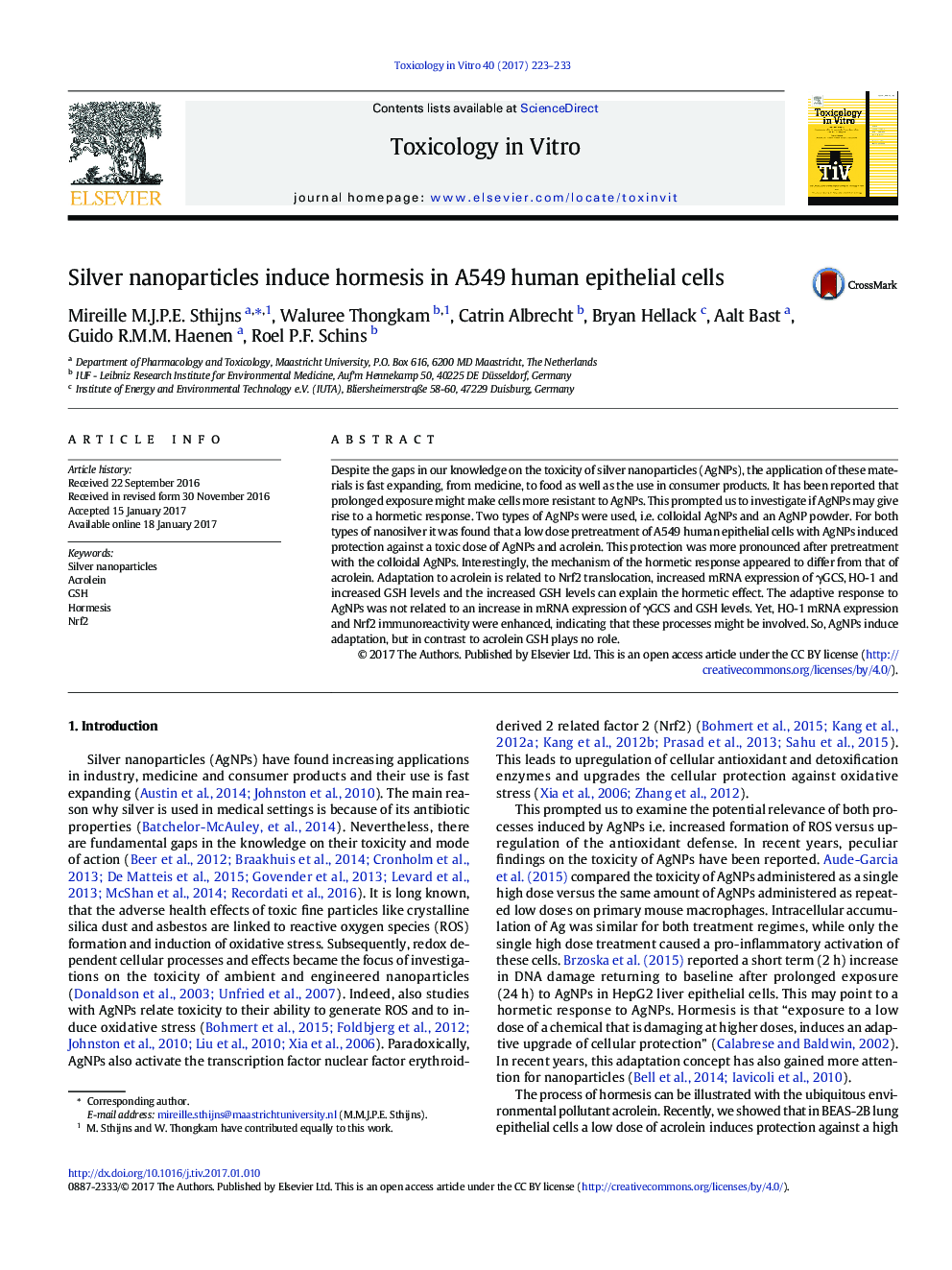| Article ID | Journal | Published Year | Pages | File Type |
|---|---|---|---|---|
| 5562710 | Toxicology in Vitro | 2017 | 11 Pages |
Abstract
Despite the gaps in our knowledge on the toxicity of silver nanoparticles (AgNPs), the application of these materials is fast expanding, from medicine, to food as well as the use in consumer products. It has been reported that prolonged exposure might make cells more resistant to AgNPs. This prompted us to investigate if AgNPs may give rise to a hormetic response. Two types of AgNPs were used, i.e. colloidal AgNPs and an AgNP powder. For both types of nanosilver it was found that a low dose pretreatment of A549 human epithelial cells with AgNPs induced protection against a toxic dose of AgNPs and acrolein. This protection was more pronounced after pretreatment with the colloidal AgNPs. Interestingly, the mechanism of the hormetic response appeared to differ from that of acrolein. Adaptation to acrolein is related to Nrf2 translocation, increased mRNA expression of γGCS, HO-1 and increased GSH levels and the increased GSH levels can explain the hormetic effect. The adaptive response to AgNPs was not related to an increase in mRNA expression of γGCS and GSH levels. Yet, HO-1 mRNA expression and Nrf2 immunoreactivity were enhanced, indicating that these processes might be involved. So, AgNPs induce adaptation, but in contrast to acrolein GSH plays no role.
Related Topics
Life Sciences
Environmental Science
Health, Toxicology and Mutagenesis
Authors
Mireille M.J.P.E. Sthijns, Waluree Thongkam, Catrin Albrecht, Bryan Hellack, Aalt Bast, Guido R.M.M. Haenen, Roel P.F. Schins,
